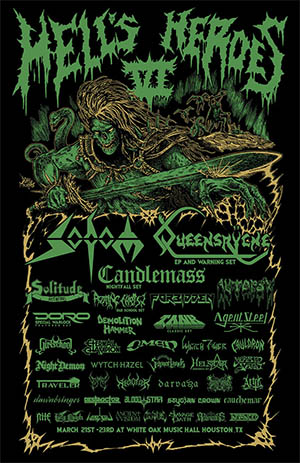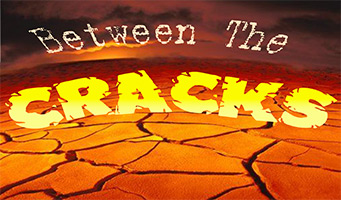 In my original installment of “Between The Cracks”, nearly four years ago, I wrote about great bands that slipped between the cracks of glam, prog, art rock, metal and punk between 1973 and 1978. I covered 13 bands from that fertile period, with honorable mentions to a few others.
In my original installment of “Between The Cracks”, nearly four years ago, I wrote about great bands that slipped between the cracks of glam, prog, art rock, metal and punk between 1973 and 1978. I covered 13 bands from that fertile period, with honorable mentions to a few others.
Deserving of attention are a few more bands who came up slightly later, releasing their debut albums between 1976 and 1980. Metro, Fingerprintz and Martha & the Muffins all had elements of prog, glam, art rock, power pop and post-punk, and could have been major players in the new wave era, but for various reasons commercial success eluded them. Despite their obscurity, the bands sound incredibly fresh and relevant today, as many current artists mine the same crossroads of post-punk and dance music those bands helped pioneer.
With nods to art rock, prog and glam, 10cc, Be Bop Deluxe, Roxy Music, and Phil Manzanera/801, Metro hung in a sort of limbo between glam and new wave. Members Duncan Browne and Peter Godwin have histories that goes back several years. Browne released solo acoustic albums in 1968 and 1973, and arranged choral parts for The Nice’s “Hang On To A Dream.” Godwin had a college band called Children, who recorded the single “Lady Lilac.” He hooked up with the legendary Rolling Stone’s producer and manager Andrew Loog Oldham, and recorded his first run of Metro songs for Oldham’s label Why Not. After meeting in a tavern in Holland Park, the two collaborated on over 60 songs and formed Metro.
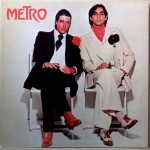 They issued their self-titled debut in 1976 on Transatlantic, and later on Sire in the U.S. The duo appear on the cover dappered up in designer clothes like cloned Robert Palmers, or the male model equivalent of Roxy Music cover, as if they were sitting in an expensive hotel lobby, about to engage in glamorous European adventures involving women, wine and possibly political intrigue. The image perfectly segued into their biggest hit, “Criminal World,” which David Bowie loved and later recorded for Let’s Dance (1983). “Overture To Flame/Flame” included nods to the waning but still popular progressive rock of Yes and Genesis, while Browne’s gorgeous “Black Lace Shoulder” evokes melodic psych of Procol Harum while still sounding contemporary. Instruments included Moog, string synth, treated electric guitars, Spanish/classical guitar, treated bass and drum effects, backward tapes and acoustic 12 string and layered vocal choirs. While Cockney Rebel may have leaned in this direction, nothing quite sounded like this album, and a closer listen to the lyrics reveal a darker, leathery heart evoking oily sex and more unsavory activities.
They issued their self-titled debut in 1976 on Transatlantic, and later on Sire in the U.S. The duo appear on the cover dappered up in designer clothes like cloned Robert Palmers, or the male model equivalent of Roxy Music cover, as if they were sitting in an expensive hotel lobby, about to engage in glamorous European adventures involving women, wine and possibly political intrigue. The image perfectly segued into their biggest hit, “Criminal World,” which David Bowie loved and later recorded for Let’s Dance (1983). “Overture To Flame/Flame” included nods to the waning but still popular progressive rock of Yes and Genesis, while Browne’s gorgeous “Black Lace Shoulder” evokes melodic psych of Procol Harum while still sounding contemporary. Instruments included Moog, string synth, treated electric guitars, Spanish/classical guitar, treated bass and drum effects, backward tapes and acoustic 12 string and layered vocal choirs. While Cockney Rebel may have leaned in this direction, nothing quite sounded like this album, and a closer listen to the lyrics reveal a darker, leathery heart evoking oily sex and more unsavory activities.

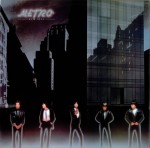 And that was it for that lineup, as Duncan Browne left, guaranteeing that album’s sound will never be repeated. More comfortable as a solo artist, Browne recorded two fascinating albums, The Wild Places (1978), Streets Of Fire (1979) that are well worth hearing. He sadly died of cancer in 1993 at the age of 46. Meanwhile, Godwin soldiered on with Sean Lyons, touring with Dire Straits and releasing New Love (EMI/Sire, 1979) and Future Imperfect (EMI/Sire, 1980). While still evoking noirish mystery and urban night-life lyrically, their sound evolved to incorporate influences like David Bowie & Iggy Pop’s Berlin albums, and New York bands Television and labelmates Talking Heads. That’s really apparent on the rhythm and chiming riffs of “New Love” which could easily have fit in Television’s Adventure (Elektra, 1978).
And that was it for that lineup, as Duncan Browne left, guaranteeing that album’s sound will never be repeated. More comfortable as a solo artist, Browne recorded two fascinating albums, The Wild Places (1978), Streets Of Fire (1979) that are well worth hearing. He sadly died of cancer in 1993 at the age of 46. Meanwhile, Godwin soldiered on with Sean Lyons, touring with Dire Straits and releasing New Love (EMI/Sire, 1979) and Future Imperfect (EMI/Sire, 1980). While still evoking noirish mystery and urban night-life lyrically, their sound evolved to incorporate influences like David Bowie & Iggy Pop’s Berlin albums, and New York bands Television and labelmates Talking Heads. That’s really apparent on the rhythm and chiming riffs of “New Love” which could easily have fit in Television’s Adventure (Elektra, 1978).
By 1981, Godwin was heavily into synth pop like The Normal, early Human League and Ultravox and Telex. As a solo artist he released “Images of Heaven” and “Emotional Disguise” with some success, and were compiled into Images Of Heaven (Polydor, 1982). Correspondence (Polydor, 1983) lacked hit singles but was a more consistent effort, suggesting he really could become a true pop star. Unfortunately it wasn’t to be. He demoed 14 songs for Polygram with guitarist Russell Bell, who was working with Gary Numan. Big name producers like Giorgio Moroder and the late Alex Sadkin were interested, but Polydor was unwilling to spend the money. He nearly got a deal with Quincy Jones’ Qwest label, but was passed over in favor of New Order. Instead, Godwin took up acting, appearing in everything from English TV like “Eastenders,” and “Minder” to “Eyes Wide Shut” and vampire movies “Sentinels Of Darkness” and “Razorblade Smile.”
 I first heard of Fingerprintz in 1980 via Trouser Press magazine. My favorite magazine went on to feature them in two more articles, along with sparkling album reviews, earning a place in the later Trouser Press Record Guides. Yet I wouldn’t actually hear the band for another 33 years. Not for lack of trying. I had their albums in my want list since I was in college in the late 80s, but just never came across a copy. Searches for digital files were fruitless for over a decade until recently. The band’s music was just as great as I imagined.
I first heard of Fingerprintz in 1980 via Trouser Press magazine. My favorite magazine went on to feature them in two more articles, along with sparkling album reviews, earning a place in the later Trouser Press Record Guides. Yet I wouldn’t actually hear the band for another 33 years. Not for lack of trying. I had their albums in my want list since I was in college in the late 80s, but just never came across a copy. Searches for digital files were fruitless for over a decade until recently. The band’s music was just as great as I imagined.
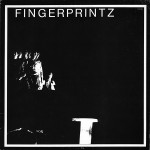 The band was formed in Glasgow, Scotland in 1977 by Jimmie O’Neill, an art school drop-out who had actually been a working musician since the early 70s with funk band Bandana. Sharing management with Ian Dury’s pre-Blockheads band Kilburn and the High Roads, he released a single under the name of Jimme Shelter. Passing up an offer to join Dury, he focused on his songwriting, writing “Say When” for Suzi Quatro (recorded in 1978 by Lene Lovich) and “Spellbound” for Hot Chocolate, which ended up recorded by Rachel Sweet, whom his band would support on her 1978 tour. After forming Fingerprintz with Bandana bandmate Bogdan Wiczling, Cha Burnz, Kenny Alton and Iain Reid, Virgin International signed them. They seemed poised for success.
The band was formed in Glasgow, Scotland in 1977 by Jimmie O’Neill, an art school drop-out who had actually been a working musician since the early 70s with funk band Bandana. Sharing management with Ian Dury’s pre-Blockheads band Kilburn and the High Roads, he released a single under the name of Jimme Shelter. Passing up an offer to join Dury, he focused on his songwriting, writing “Say When” for Suzi Quatro (recorded in 1978 by Lene Lovich) and “Spellbound” for Hot Chocolate, which ended up recorded by Rachel Sweet, whom his band would support on her 1978 tour. After forming Fingerprintz with Bandana bandmate Bogdan Wiczling, Cha Burnz, Kenny Alton and Iain Reid, Virgin International signed them. They seemed poised for success.
 The Very Dab was released in 1979, a rough-edged mix of new wave, power pop and even prescient dubby post-punk in the form of the fantastic “Wet Job.” “Fingerprince” has a proto dance rock vibe, “Beam Me Up Scotty” tackles reggae, “Punchy Judy” is spastic high energy new wave along the lines of XTC, while “Temperamental” and “Hey Mr. Smith” rock as hard as anything by The Jam. O’Neill’s lyrics focus largely on dark noir crime narratives, with extra paranoia. Despite the extremely promising material on the debut, Virgin did nothing to promote the band. Perhaps in response to the label’s indifference, Distinguishing Marks (1980) was tightly honed, pure catchy pop. Produced by Nick Garvey of The Motors, the muddy sound of the debut is cleaned up, and the results were excellent. “Yes Eyes,” “Houdini Love,” “Remorse Code” and “Ringing Tone” feature bright, hooky melodies while still featuring dark lyrics. There was certainly more than one potential at least minor hit singles, but again, Virgin sat on their hands. Atlantic distributed the album in the U.S. and were even worse.
The Very Dab was released in 1979, a rough-edged mix of new wave, power pop and even prescient dubby post-punk in the form of the fantastic “Wet Job.” “Fingerprince” has a proto dance rock vibe, “Beam Me Up Scotty” tackles reggae, “Punchy Judy” is spastic high energy new wave along the lines of XTC, while “Temperamental” and “Hey Mr. Smith” rock as hard as anything by The Jam. O’Neill’s lyrics focus largely on dark noir crime narratives, with extra paranoia. Despite the extremely promising material on the debut, Virgin did nothing to promote the band. Perhaps in response to the label’s indifference, Distinguishing Marks (1980) was tightly honed, pure catchy pop. Produced by Nick Garvey of The Motors, the muddy sound of the debut is cleaned up, and the results were excellent. “Yes Eyes,” “Houdini Love,” “Remorse Code” and “Ringing Tone” feature bright, hooky melodies while still featuring dark lyrics. There was certainly more than one potential at least minor hit singles, but again, Virgin sat on their hands. Atlantic distributed the album in the U.S. and were even worse.
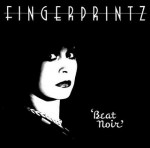 The band bounced back with their third and best album, Beat Noir (1981). O’Neill wasn’t fond of the pop production, and felt he didn’t have much wiggle room to make the songs from Distinguishing Marks breathe live, so he went into another direction with dance music that could shake the rafters with heavy beats. O’Neill’s background in funk and obsession with film noir merge perfectly in his most fully realized artistic vision here, particularly on “The Chase” and “Shadowed.” The band was ahead of the curve, pre-dating the dance rock experiments of Talking Heads and Gang Of Four with much more satisfying results. You can hear the influence of the stuttering, percussive sixteenth-note guitar from “Catwalk” and “Famous Last Words” in not only the two aforementioned bands, but dozens that came after, including the likes of The Rapture and LCD Soundsystem over 20 years later. But again, big boos for Virgin, who dropped the ball a final time, and Stiff on the U.S. side. What a colossal label failure. Virgin owes it to all of us to issue a deluxe remastered set of all three lost classics. O’Neill reunited with guitarist Cha Burns in the late 80s to form the more commercially successful the Silencers, which followed the “big rock” blueprint of Big Country and U2.
The band bounced back with their third and best album, Beat Noir (1981). O’Neill wasn’t fond of the pop production, and felt he didn’t have much wiggle room to make the songs from Distinguishing Marks breathe live, so he went into another direction with dance music that could shake the rafters with heavy beats. O’Neill’s background in funk and obsession with film noir merge perfectly in his most fully realized artistic vision here, particularly on “The Chase” and “Shadowed.” The band was ahead of the curve, pre-dating the dance rock experiments of Talking Heads and Gang Of Four with much more satisfying results. You can hear the influence of the stuttering, percussive sixteenth-note guitar from “Catwalk” and “Famous Last Words” in not only the two aforementioned bands, but dozens that came after, including the likes of The Rapture and LCD Soundsystem over 20 years later. But again, big boos for Virgin, who dropped the ball a final time, and Stiff on the U.S. side. What a colossal label failure. Virgin owes it to all of us to issue a deluxe remastered set of all three lost classics. O’Neill reunited with guitarist Cha Burns in the late 80s to form the more commercially successful the Silencers, which followed the “big rock” blueprint of Big Country and U2.
 When the reissue of Martha & The Muffins’ first album, Metro Music (Virgin International, 1980) was announced in 2002, I only had the vaguest recollections of them as some sort of new wave one hit wonder on the order of Berlin or Yaz. Listening to the album set me straight. “Echo Beach” was a minor hit for the band, but the album was full of witty, powerful songs. Vocalist Martha Johnson’s understated, often awkward girl-next-door voice is oddly appealing, keeping some of the arty affectations of saxophone-augmented Roxy Music-inspired tunes more down to earth. Other highlights include “Indecision” and “Paint By Number Heart.”
When the reissue of Martha & The Muffins’ first album, Metro Music (Virgin International, 1980) was announced in 2002, I only had the vaguest recollections of them as some sort of new wave one hit wonder on the order of Berlin or Yaz. Listening to the album set me straight. “Echo Beach” was a minor hit for the band, but the album was full of witty, powerful songs. Vocalist Martha Johnson’s understated, often awkward girl-next-door voice is oddly appealing, keeping some of the arty affectations of saxophone-augmented Roxy Music-inspired tunes more down to earth. Other highlights include “Indecision” and “Paint By Number Heart.”
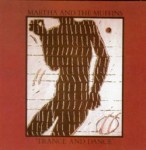 Formed in 1977 in Toronto, their debut could have been the beginning and end, as it was for many one hit wonders of the era. But they were just getting started. The latest to be reissued in 2013 is their second album, Trance & Dance, (Dindisc, 1980). Originally considered somewhat of a disappointment, it boasts some good singles in “About Insomnia,” “Suburban Dream” and particularly “Was Ezo.” While it may sound more mature and mannered than their debut, it has a purposeful gray sheen that distinguishes its sound from the band’s other work thanks to production work by Mike Howlett (Orchestral Manoeuvres in the Dark, Comsat Angels).
Formed in 1977 in Toronto, their debut could have been the beginning and end, as it was for many one hit wonders of the era. But they were just getting started. The latest to be reissued in 2013 is their second album, Trance & Dance, (Dindisc, 1980). Originally considered somewhat of a disappointment, it boasts some good singles in “About Insomnia,” “Suburban Dream” and particularly “Was Ezo.” While it may sound more mature and mannered than their debut, it has a purposeful gray sheen that distinguishes its sound from the band’s other work thanks to production work by Mike Howlett (Orchestral Manoeuvres in the Dark, Comsat Angels).
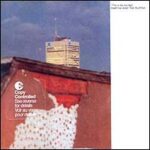 The band earned the tag as the Canadian Talking Heads with This Is The Ice Age (Dindisc, 1981). Their secret weapon was a young Daniel Lanois, who would play the Brian Eno role for a trilogy of albums. It’s like the band went from black and white to Technicolor. Lanois incorporated incidental sounds and digital synthesizers filtered through delays and reverbs that made it sound less synthetic than their peers. The drum sounds themselves are impressively ahead of their time, like they used giant rubber mallets. It sounds like Tricky may have sampled them on Maxinquaye 14 years later. Embedded toward the end of the title track, you’ll hear a snippet of a scrambled, processed vocal that sounds suspiciously like the intro to Radiohead’s Kid A.
The band earned the tag as the Canadian Talking Heads with This Is The Ice Age (Dindisc, 1981). Their secret weapon was a young Daniel Lanois, who would play the Brian Eno role for a trilogy of albums. It’s like the band went from black and white to Technicolor. Lanois incorporated incidental sounds and digital synthesizers filtered through delays and reverbs that made it sound less synthetic than their peers. The drum sounds themselves are impressively ahead of their time, like they used giant rubber mallets. It sounds like Tricky may have sampled them on Maxinquaye 14 years later. Embedded toward the end of the title track, you’ll hear a snippet of a scrambled, processed vocal that sounds suspiciously like the intro to Radiohead’s Kid A.
The songwriting is as equally stunning as the band’s vivid new sound. After an abrasive opening sound of what sounds like a traffic jam, “Swimming” slides in, smooth and oily, a sinewy bass track undulates around Mark Gane’s buttery baritone, and that incredible drum sound. From its sound, bittersweet lyrics and unconventional song structure, it’s one of the most singularly original songs of the 80s. Showcasing Martha Johnson’s vocals, “Women Around the World At Work” is a stunning single, with a metronomic rhythm that anticipates Stereolab, a searing guitar solo that echoes the dry, brittle tone of Television’s Tom Verlaine, and Andy Haas’ melancholy saxophone solo that’s too atonal to have that cliché’d 80s sound. If anything, it recalls a more introverted, melancholy mix of Roxy Music and Steely Dan. The simple, piano driven “One Day In Paris” is one of Martha’s finest showcases, in which Lanois hangs back with the most subtle of touches to let the song breathe. “You Sold The Cottage” is a grown-up followup to the lyrical theme of “Echo Beach.” The album concludes with the stunningly beautiful two-part “Three Hundred Years/Chemistry.” The first section is an instrumental synth and farfisa piece that rivals anything on Eno’s Another Green World or Bowie’s Low. It then gradually bleeds into a short, transcendent vocal number that ties the album up perfectly. It’s over far too quickly, which is why the two bonus tracks are more than welcome. On other albums they might be standouts, but here they’re just nice extras after a flawless album.
 Following the path of former labelmates Fingerprintz, they followed up with a dance rock experiment in Danseparc (RCA, 1982). Opener “Obediance” recalls Talking Heads’ use of bubbling afrobeat rhythms and Lanois’ tribute to Eno’s eerie electronic and found sounds. The album pushes boundaries of the time, but the dense layers of loud beats competing with Mark Gane’s even louder guitar may sound harsh to fans of their previous album. The band pulls back twice for respite on the somewhat bland “Sins Of Children,” and the stunningly beautiful “Whatever Happened To Radio Valve Road?” The last two albums that remain unreissued are Mystery Walk (1984) and The World Is A Ball (1985). The band’s name is truncated to the more succinct M + M in a last ditch marketing effort. The first is overall a step up from Danseparc, with it’s socially conscious, though slightly cheesy single, “Black Stations-White Stations,” and the more melodic “Cooling The Medium.” The other album is the sound of a band in decline, running out of ideas. They gathered twice since then to record potential comebacks Modern Lullaby (1992) and Delicate (2010). They’re perfectly fine albums, but their days of breaking ground and being potential hitmakers are long gone. The impressively strong body of work, particularly their first five albums, however, deserve to be remembered.
Following the path of former labelmates Fingerprintz, they followed up with a dance rock experiment in Danseparc (RCA, 1982). Opener “Obediance” recalls Talking Heads’ use of bubbling afrobeat rhythms and Lanois’ tribute to Eno’s eerie electronic and found sounds. The album pushes boundaries of the time, but the dense layers of loud beats competing with Mark Gane’s even louder guitar may sound harsh to fans of their previous album. The band pulls back twice for respite on the somewhat bland “Sins Of Children,” and the stunningly beautiful “Whatever Happened To Radio Valve Road?” The last two albums that remain unreissued are Mystery Walk (1984) and The World Is A Ball (1985). The band’s name is truncated to the more succinct M + M in a last ditch marketing effort. The first is overall a step up from Danseparc, with it’s socially conscious, though slightly cheesy single, “Black Stations-White Stations,” and the more melodic “Cooling The Medium.” The other album is the sound of a band in decline, running out of ideas. They gathered twice since then to record potential comebacks Modern Lullaby (1992) and Delicate (2010). They’re perfectly fine albums, but their days of breaking ground and being potential hitmakers are long gone. The impressively strong body of work, particularly their first five albums, however, deserve to be remembered.
More:

April 12, 2024
The School of Post-Punk – Class of ’83
March 29, 2024
Fester’s Lucky 13: 1994
February 29, 2024
Best of 1984
